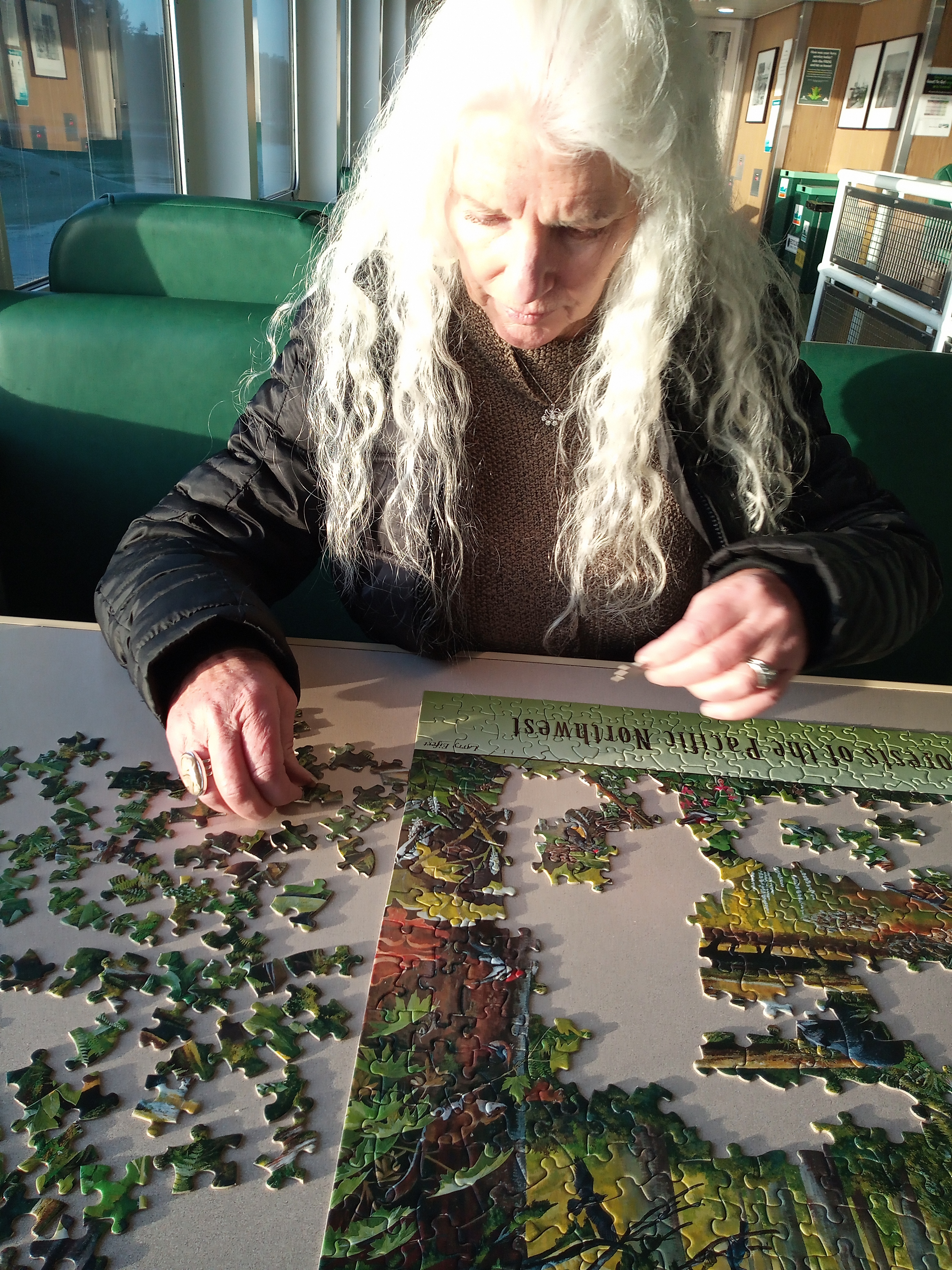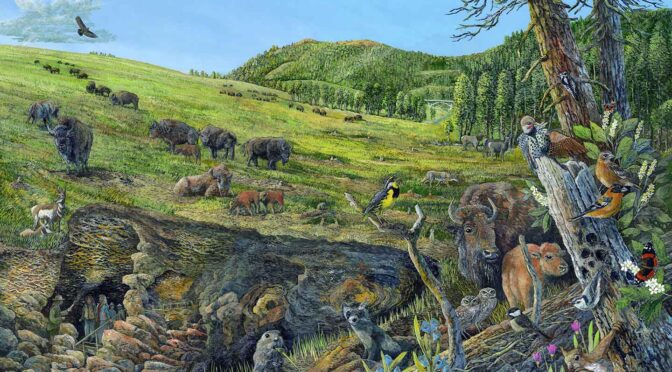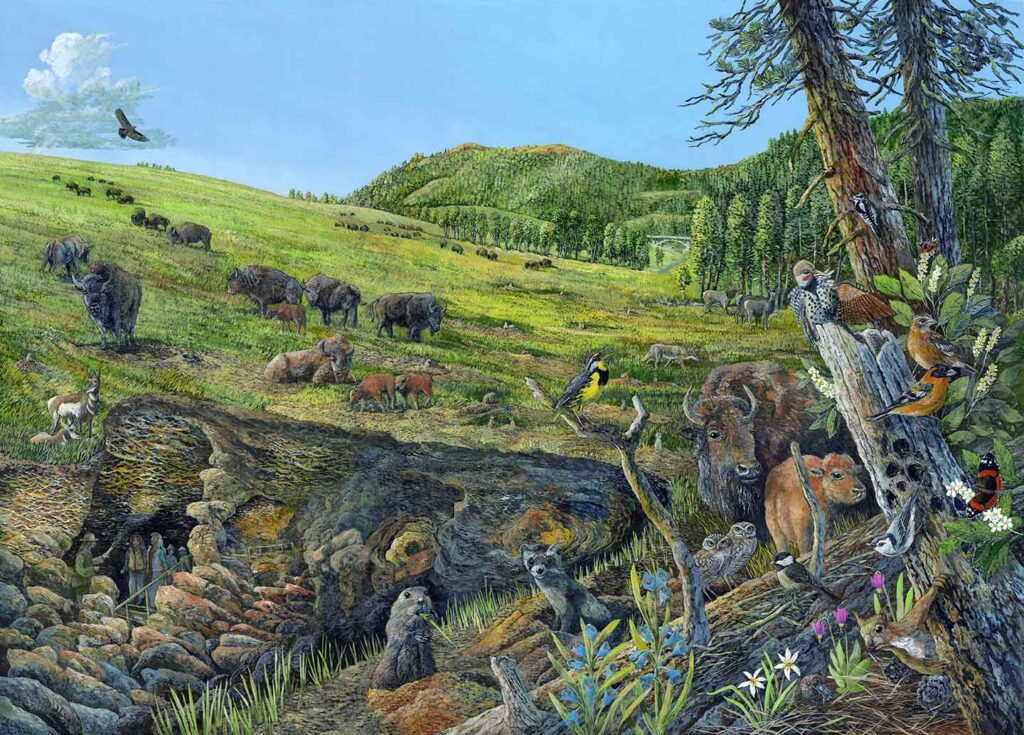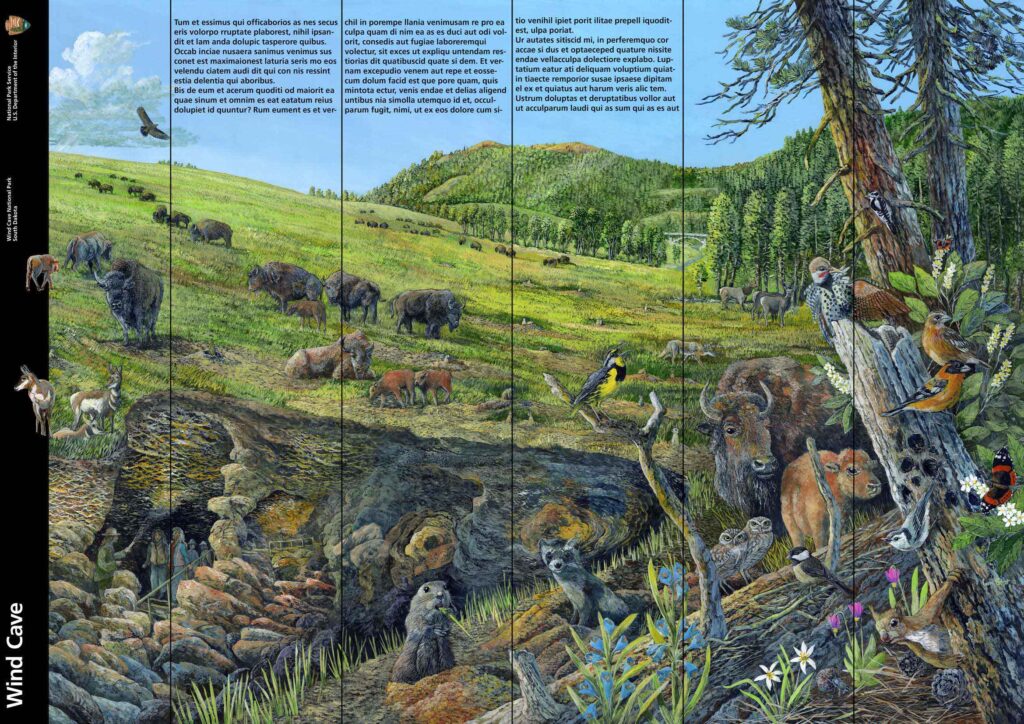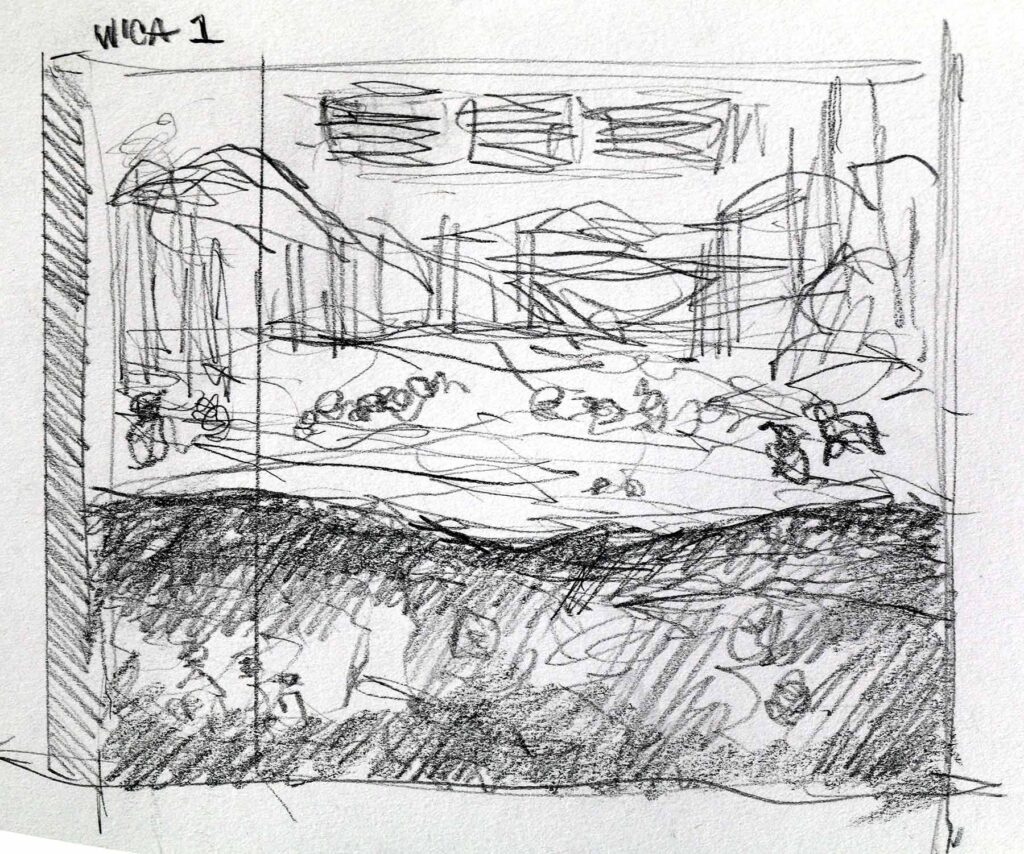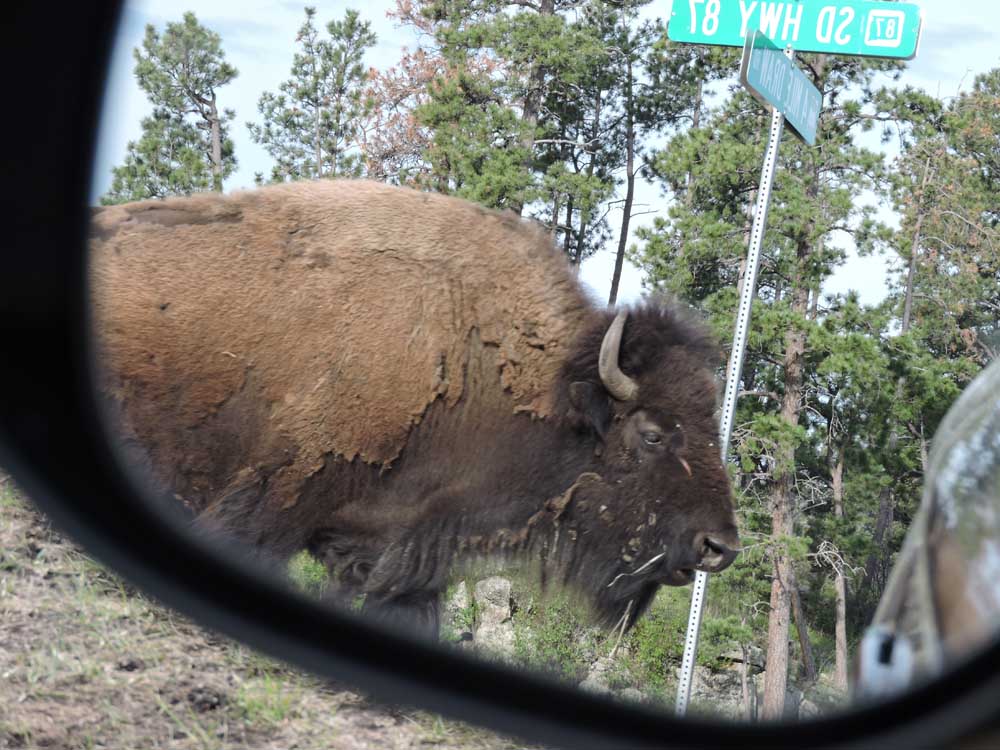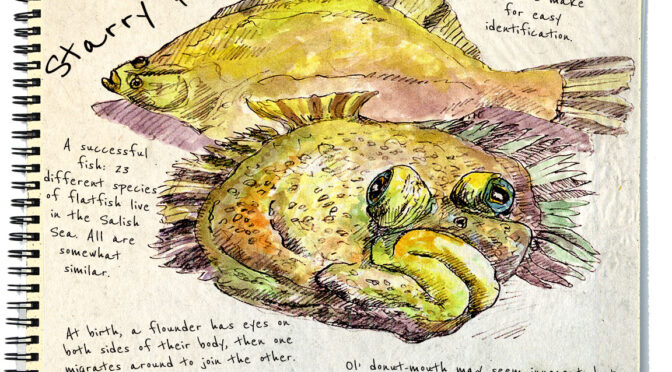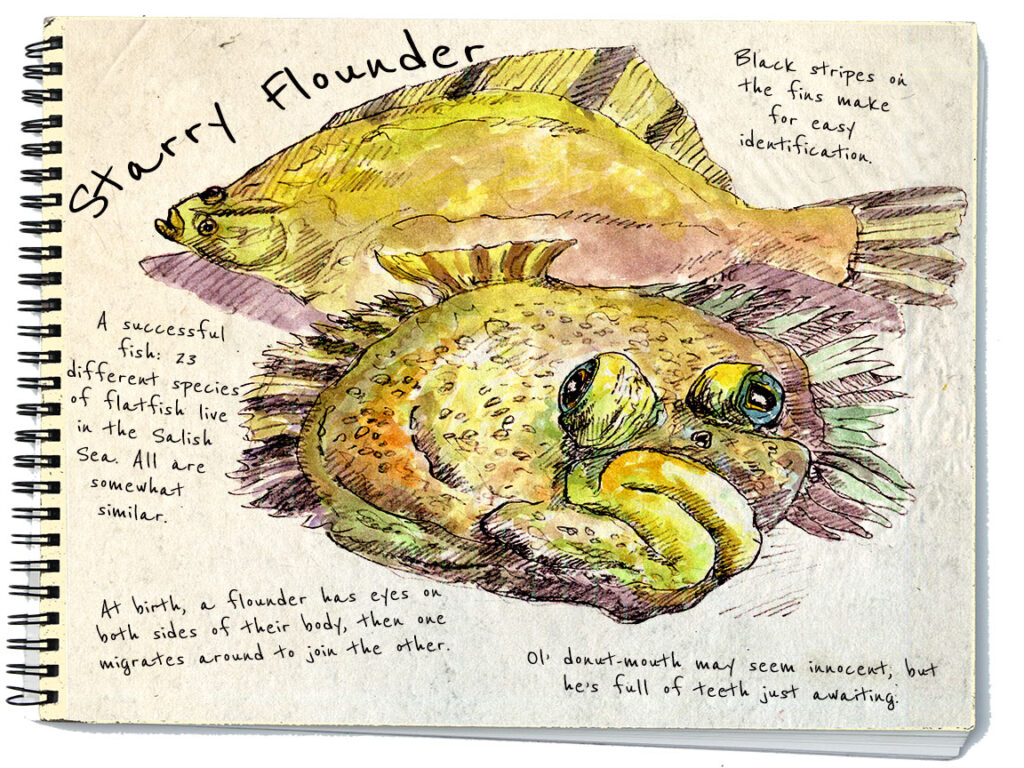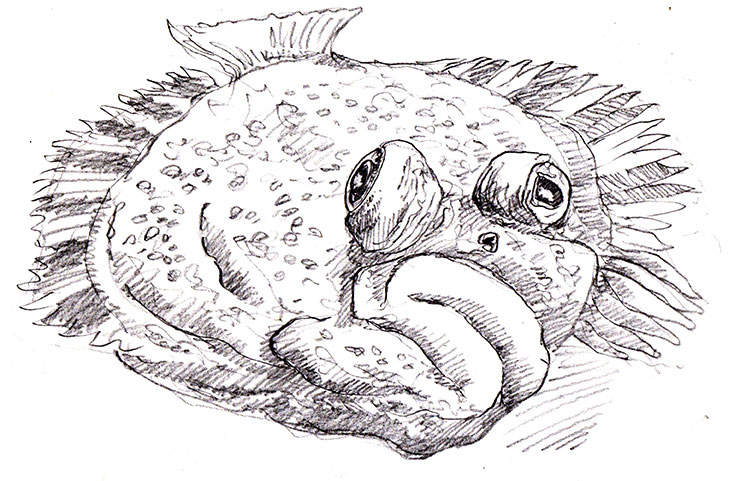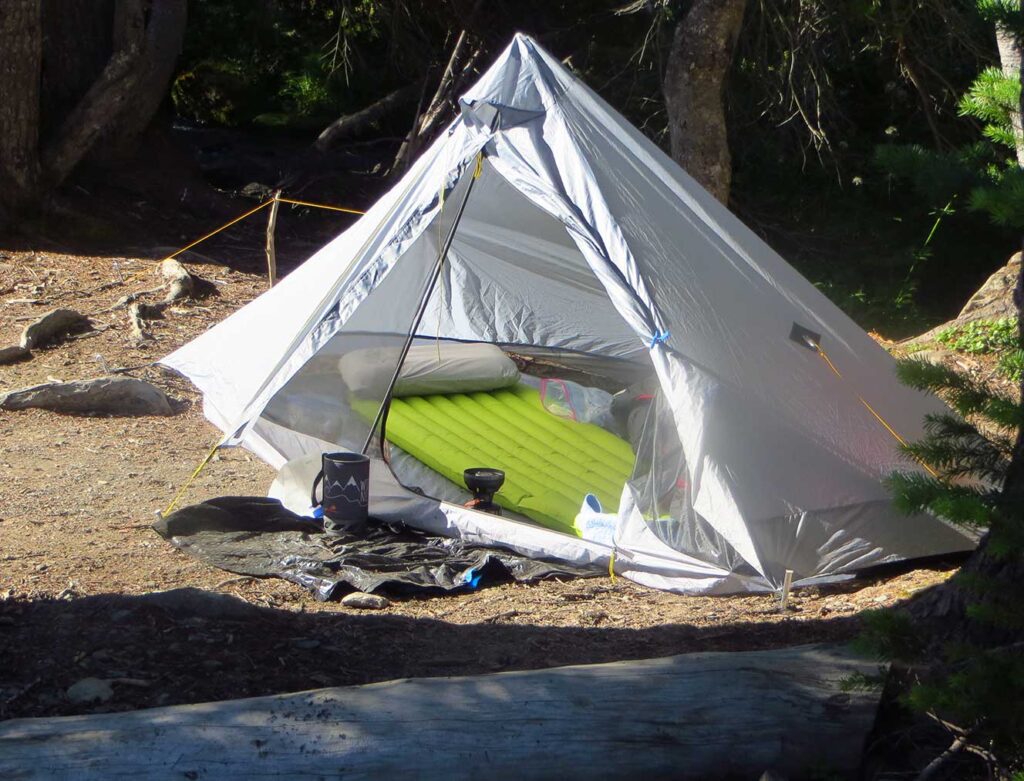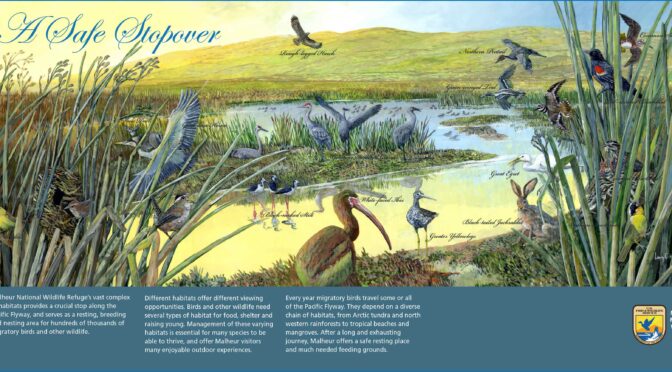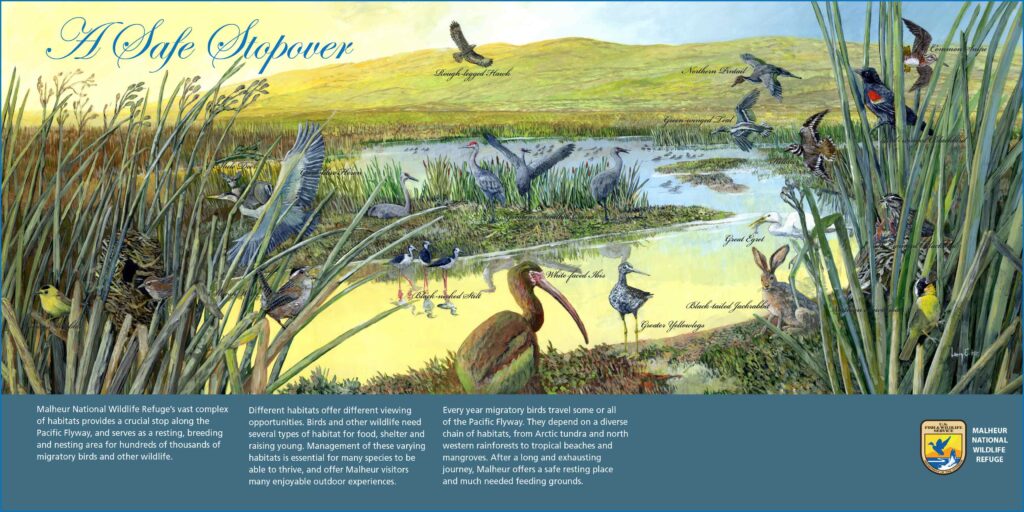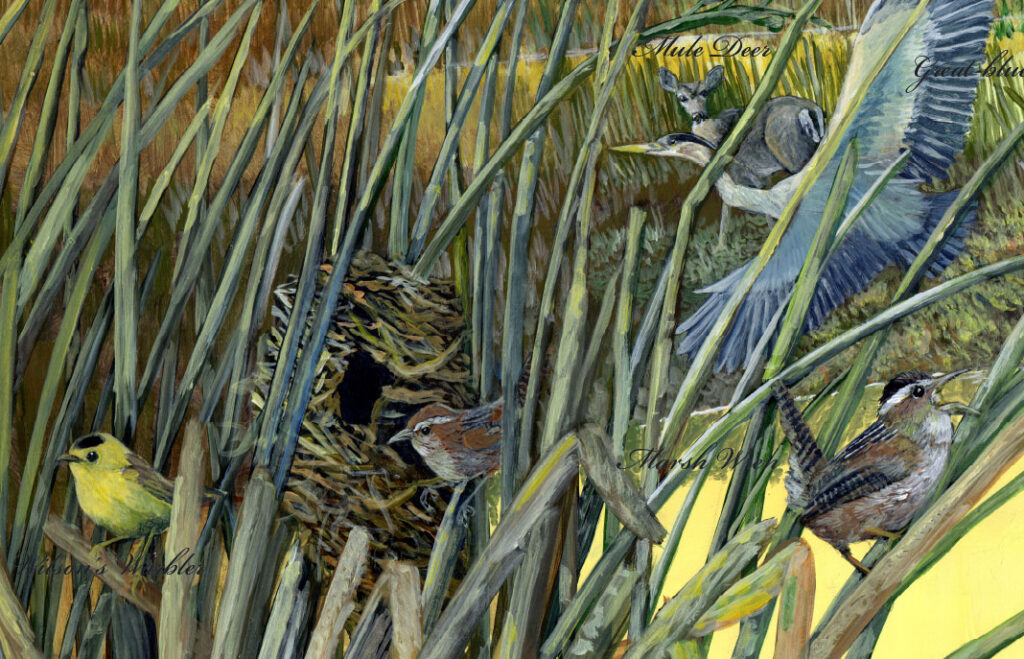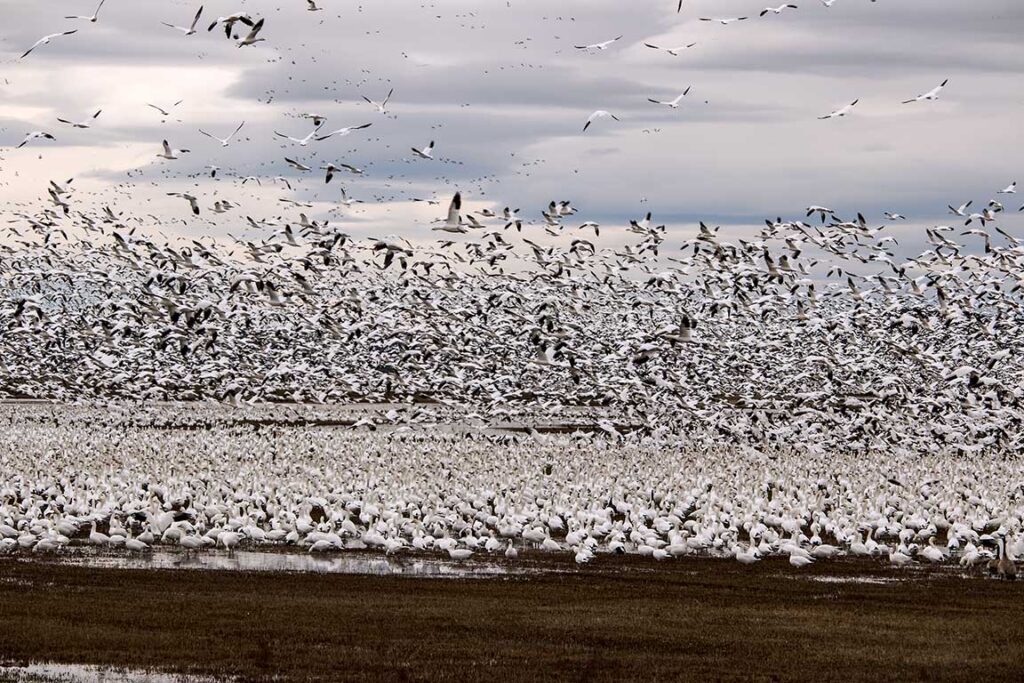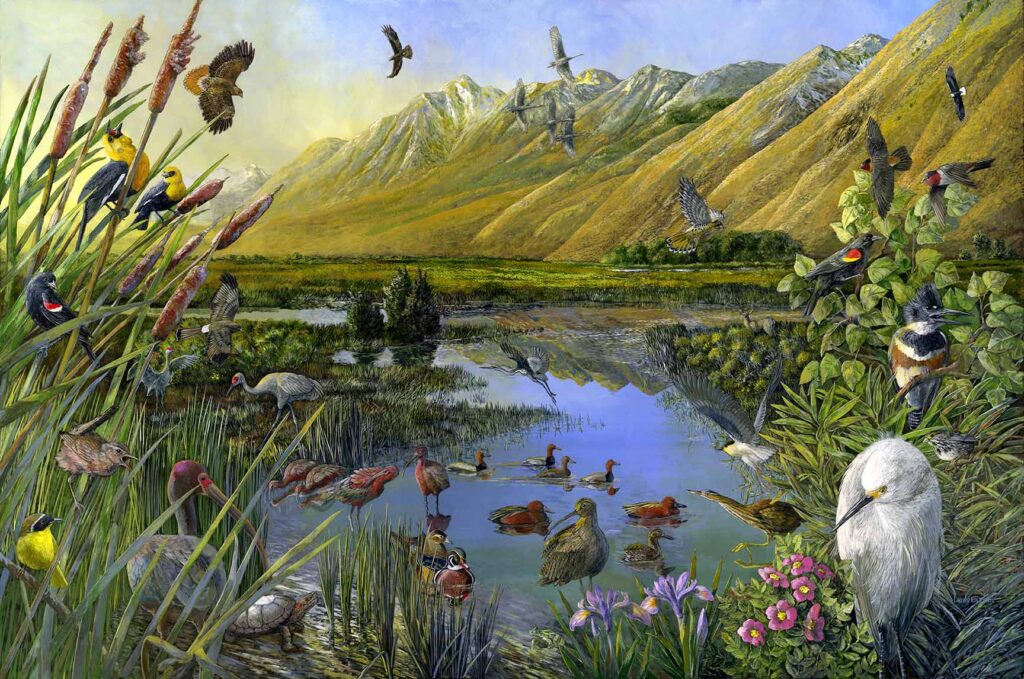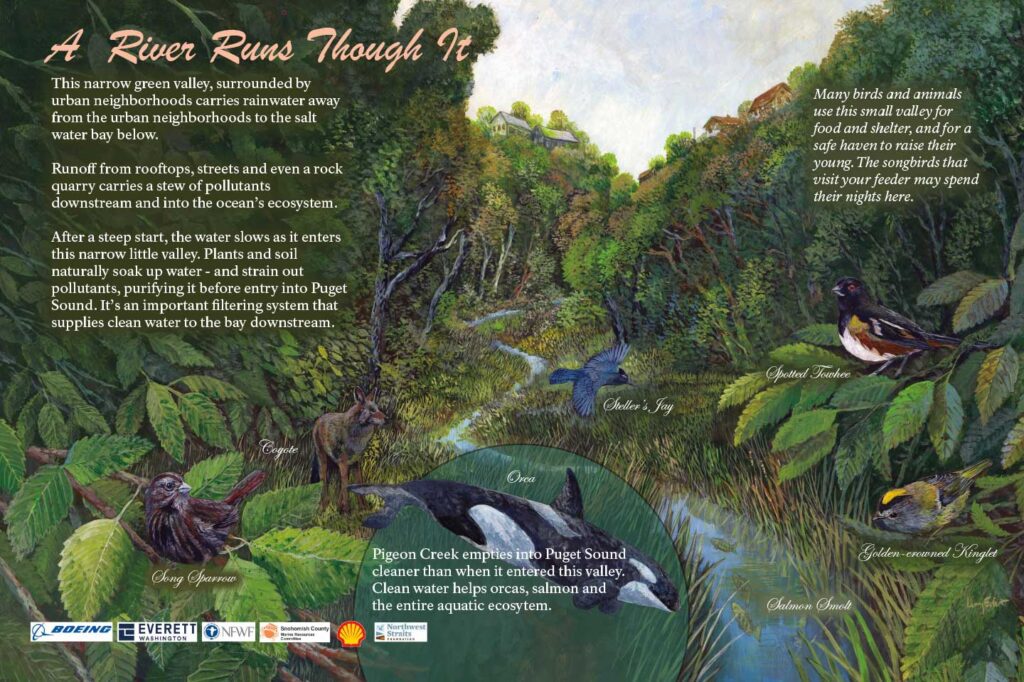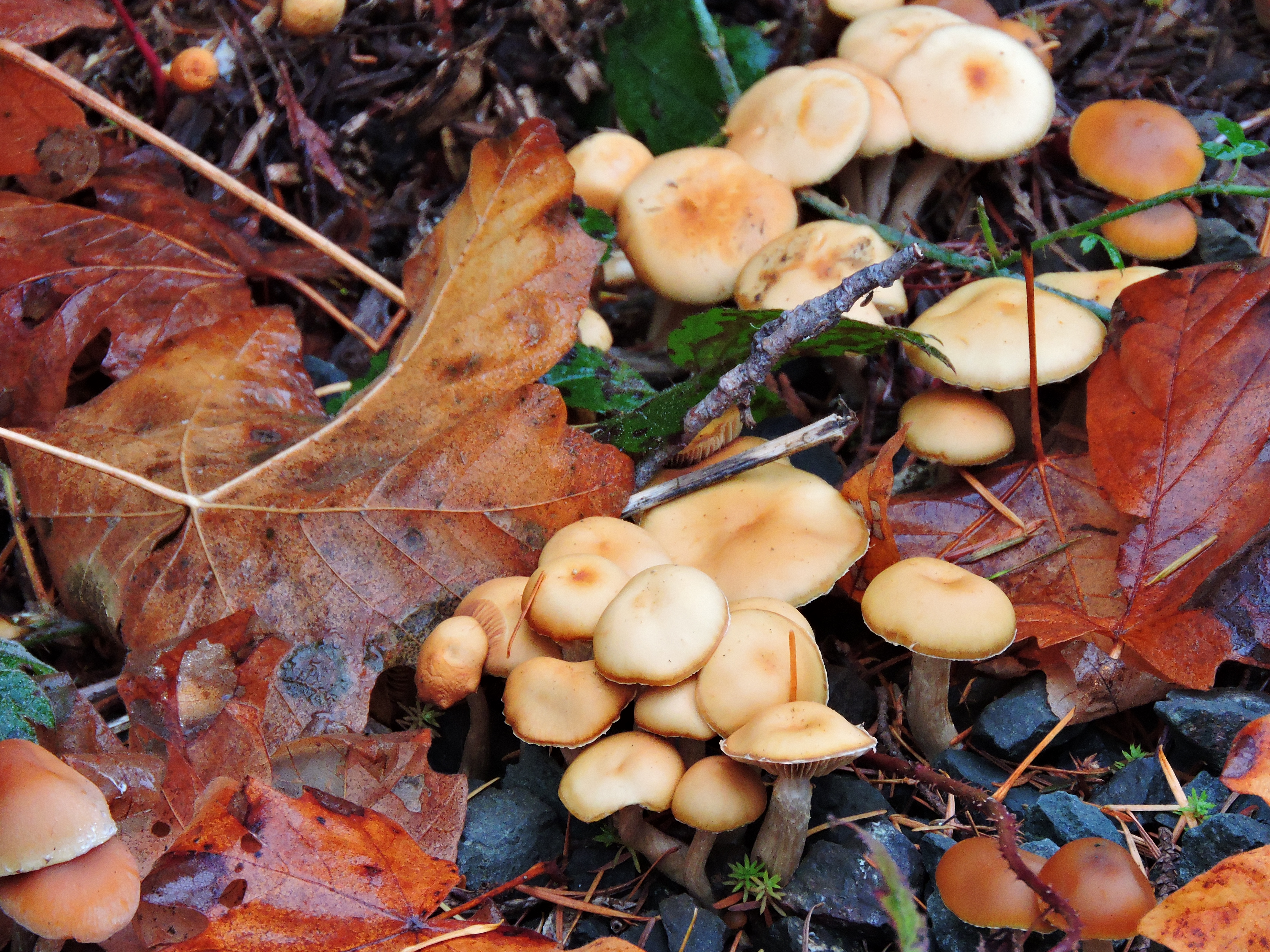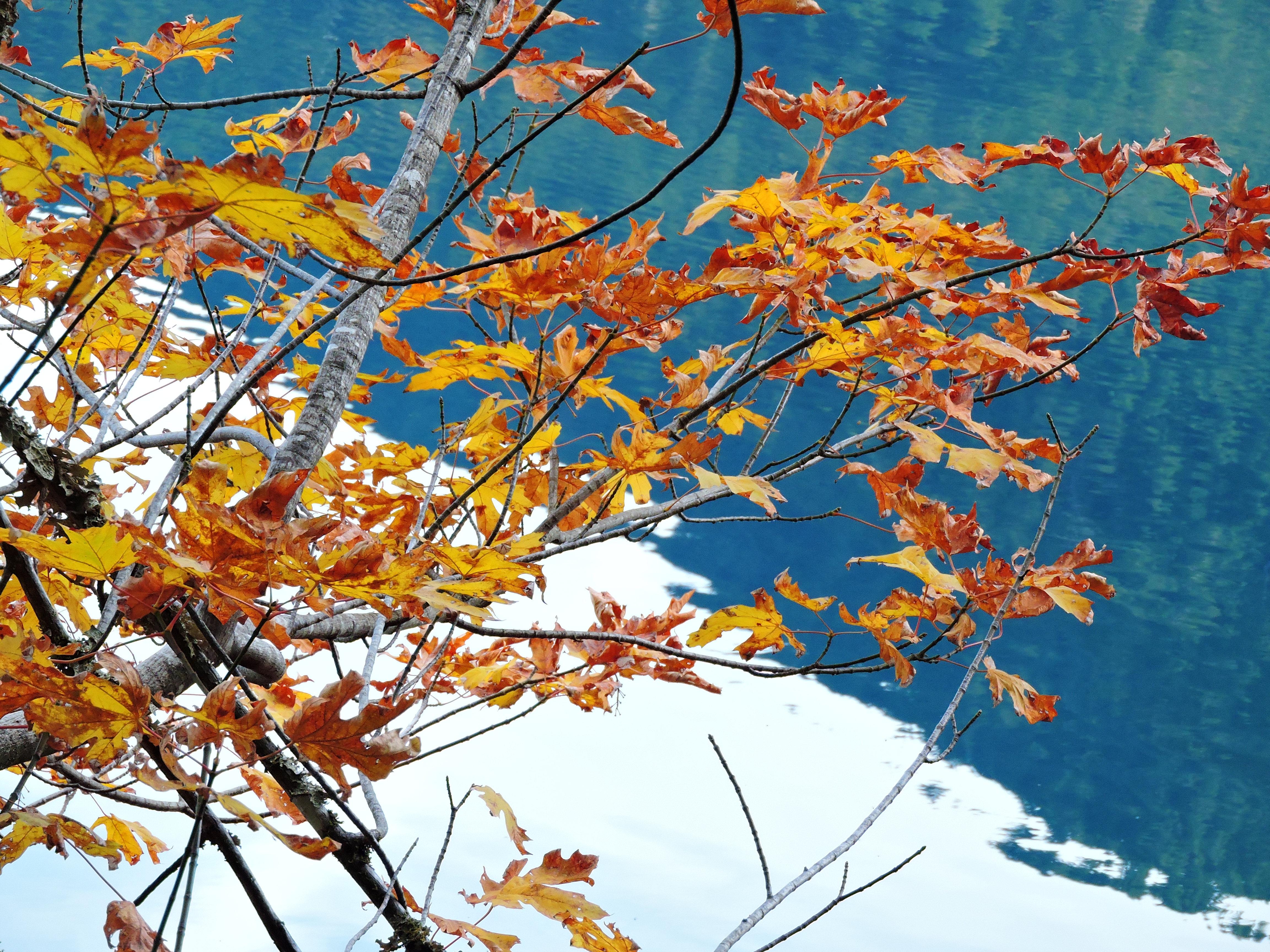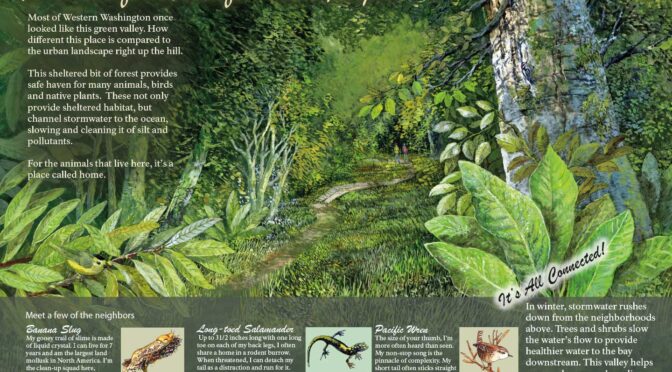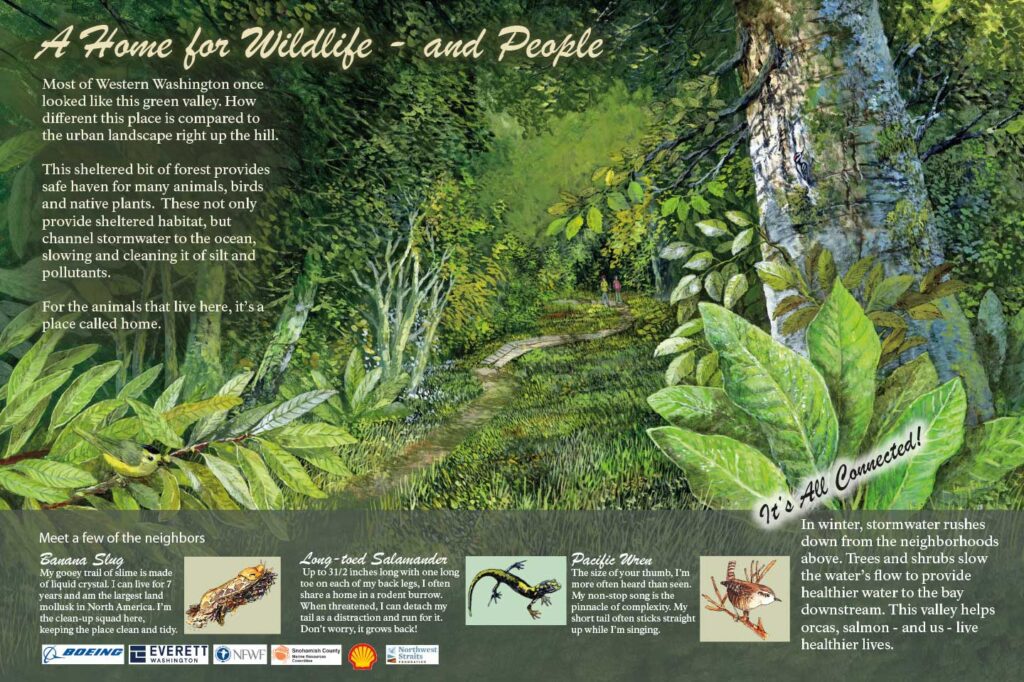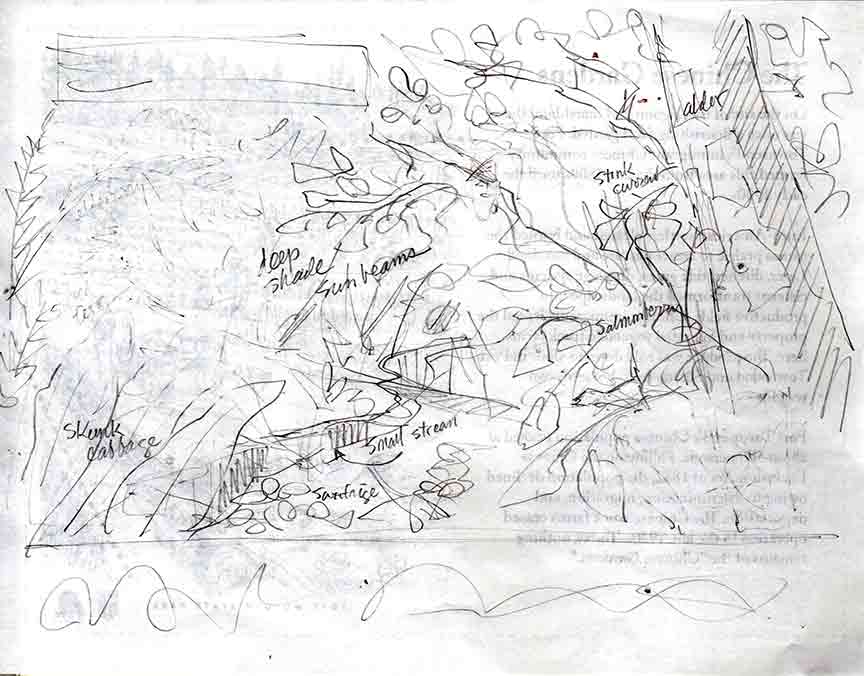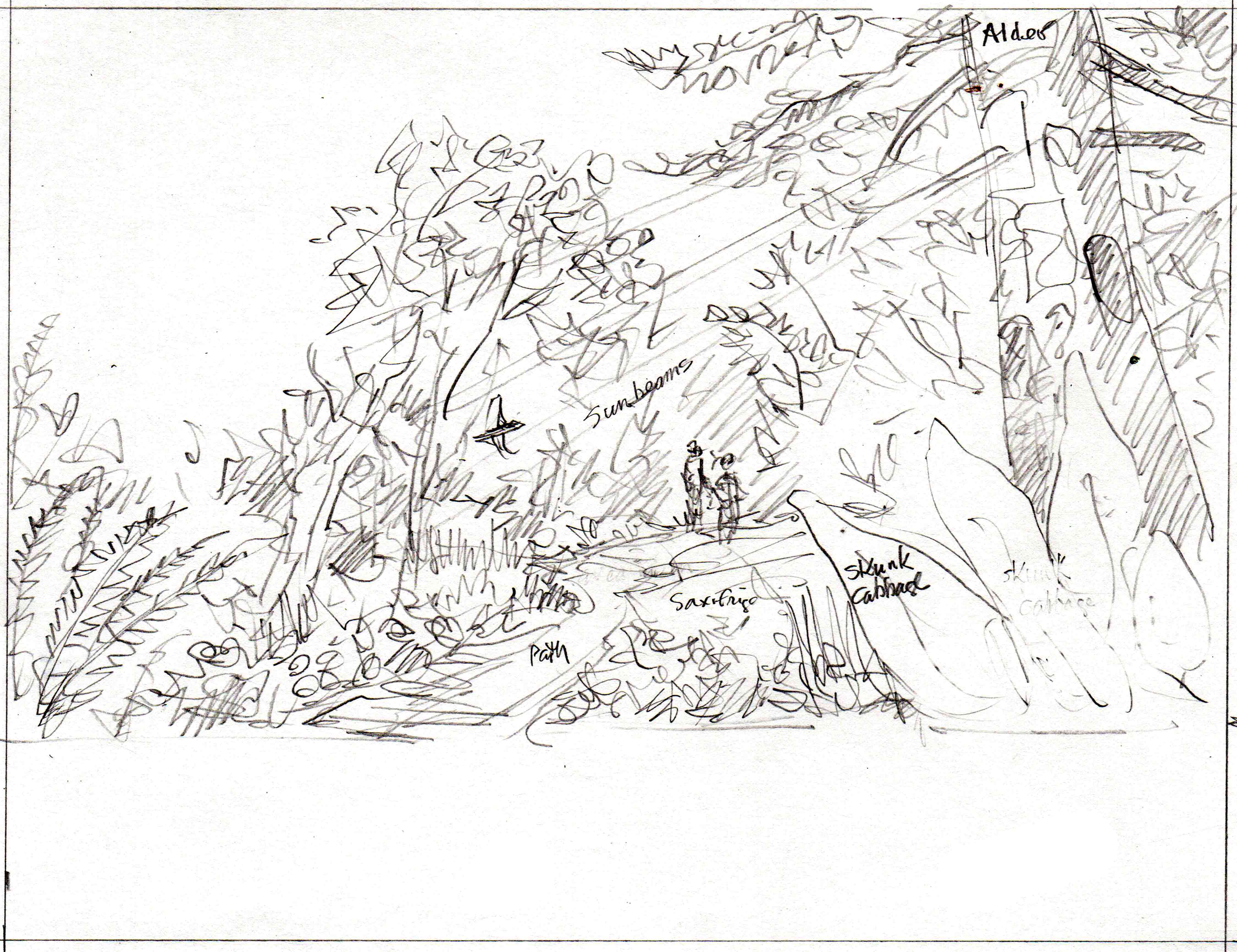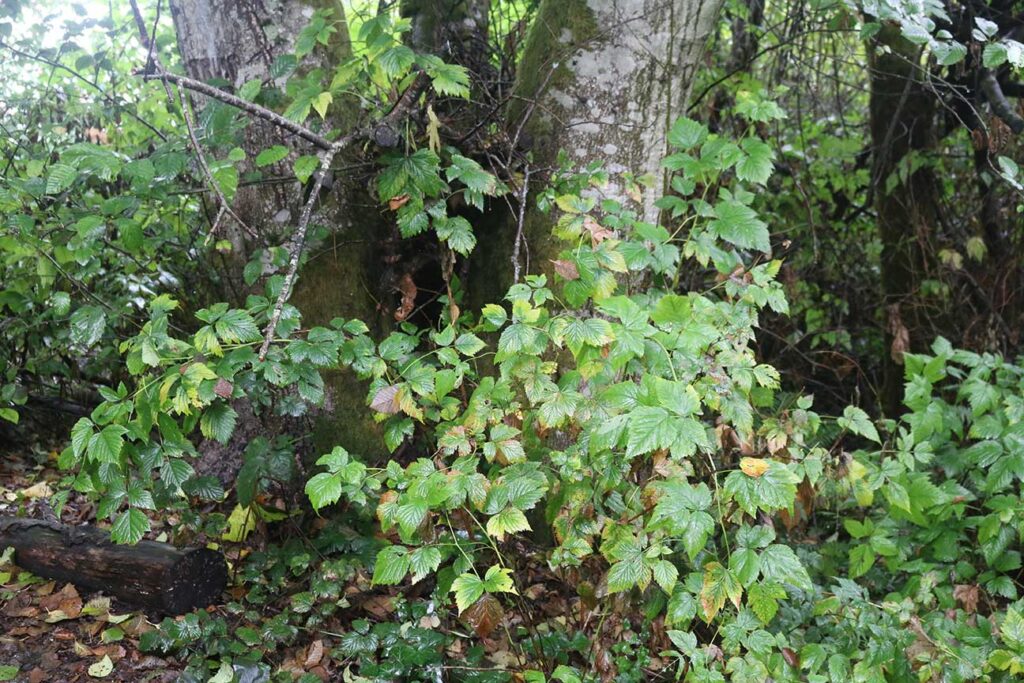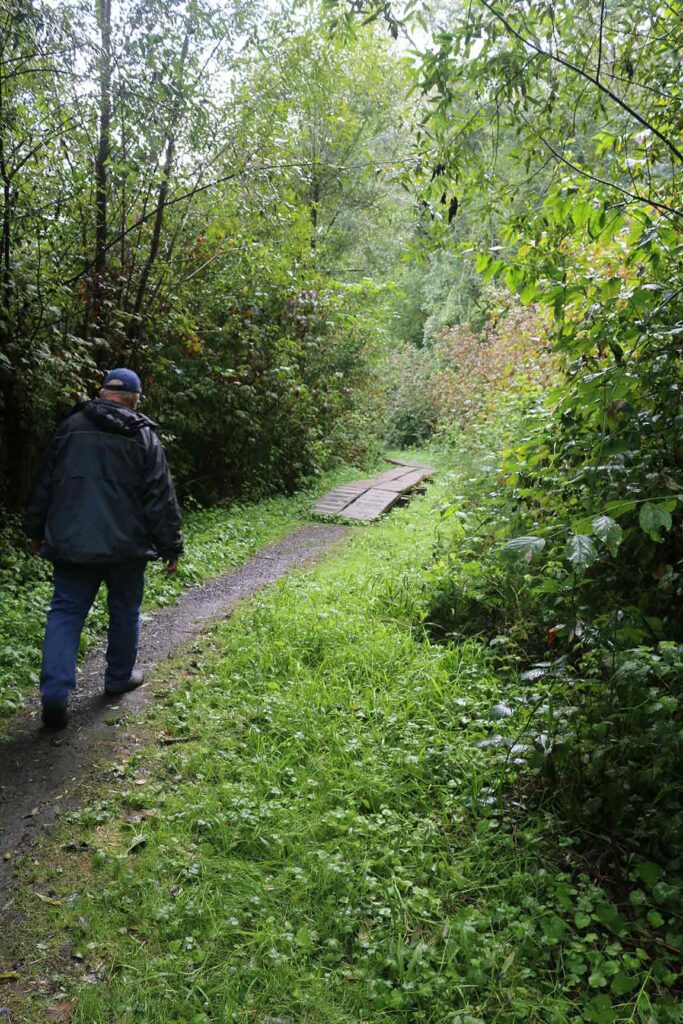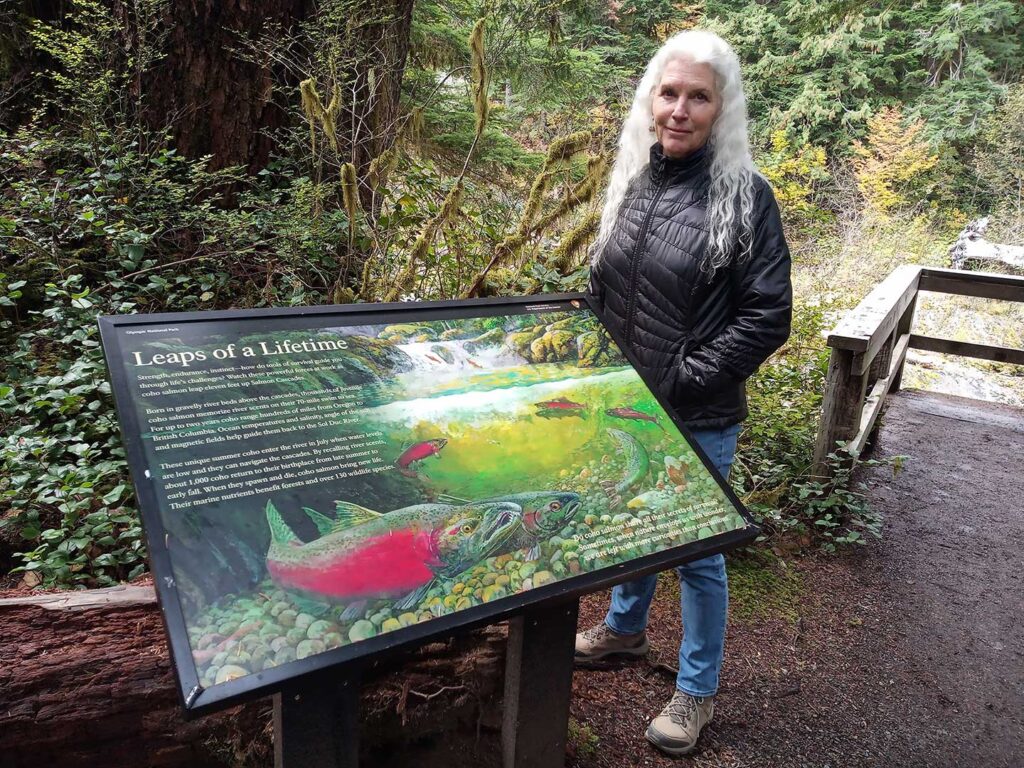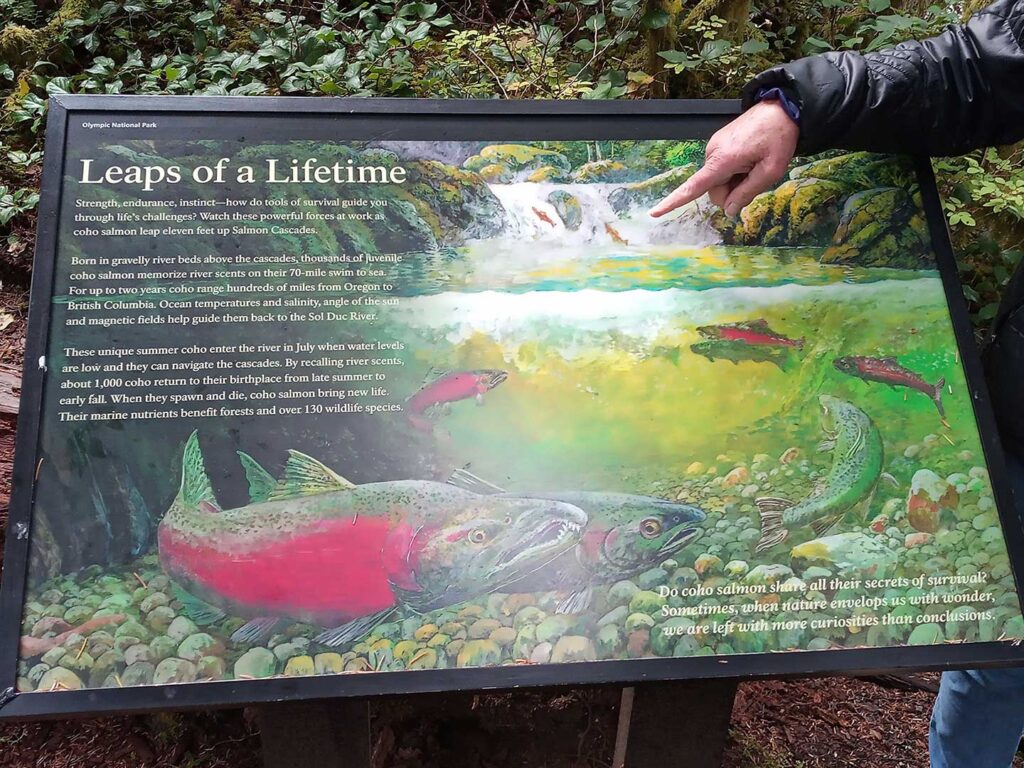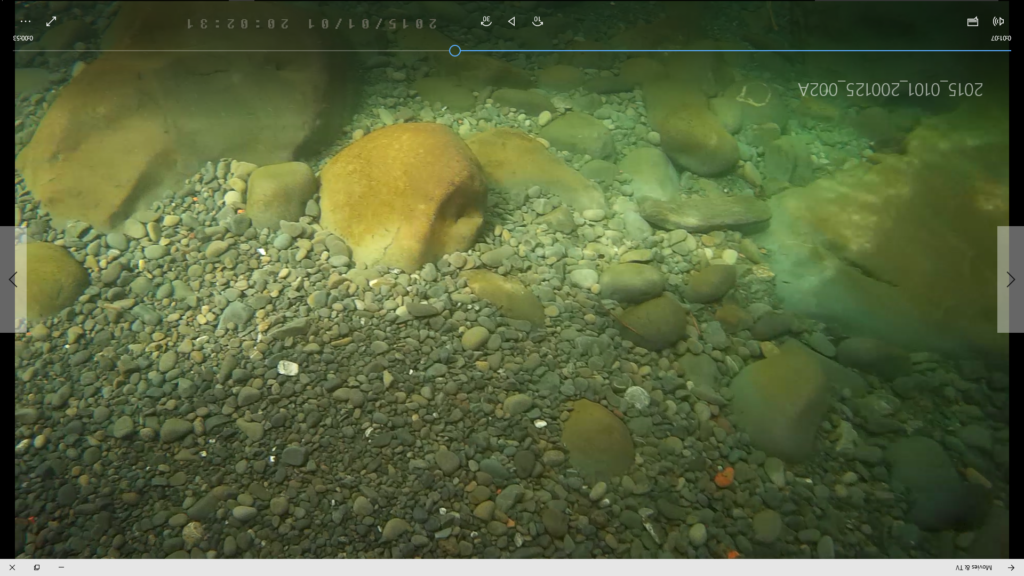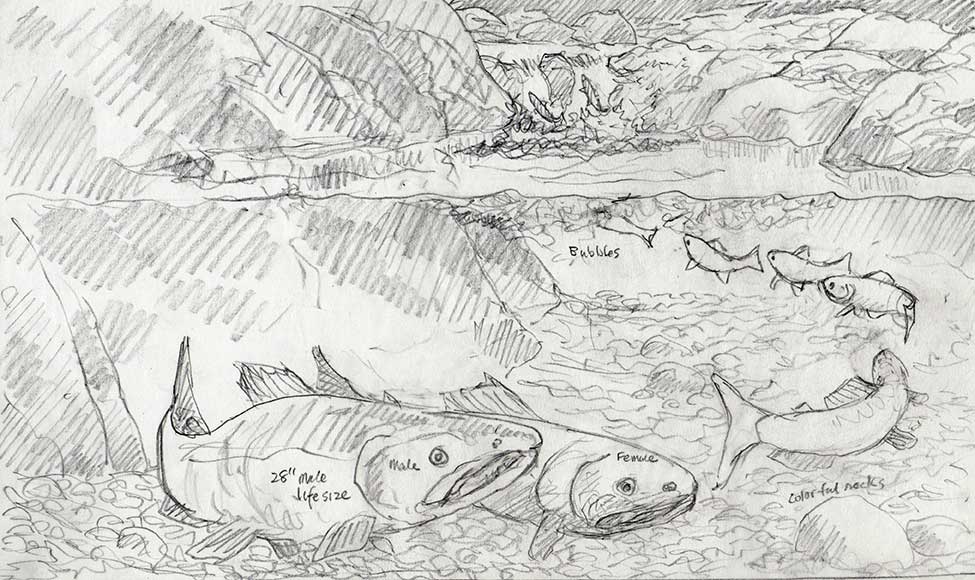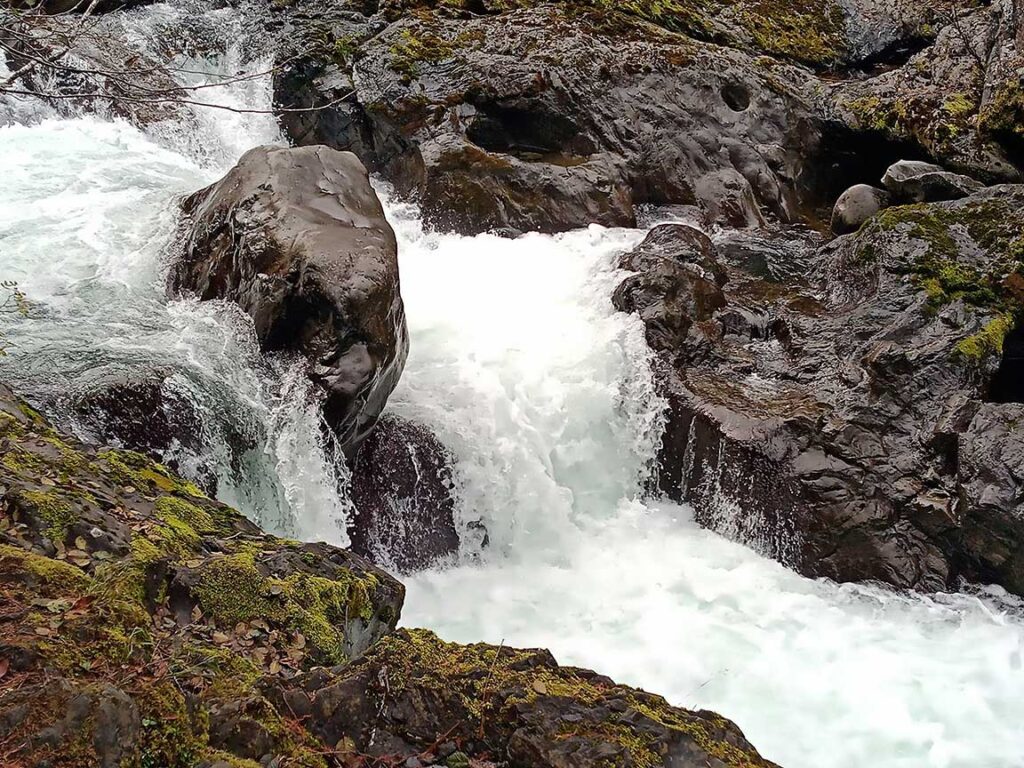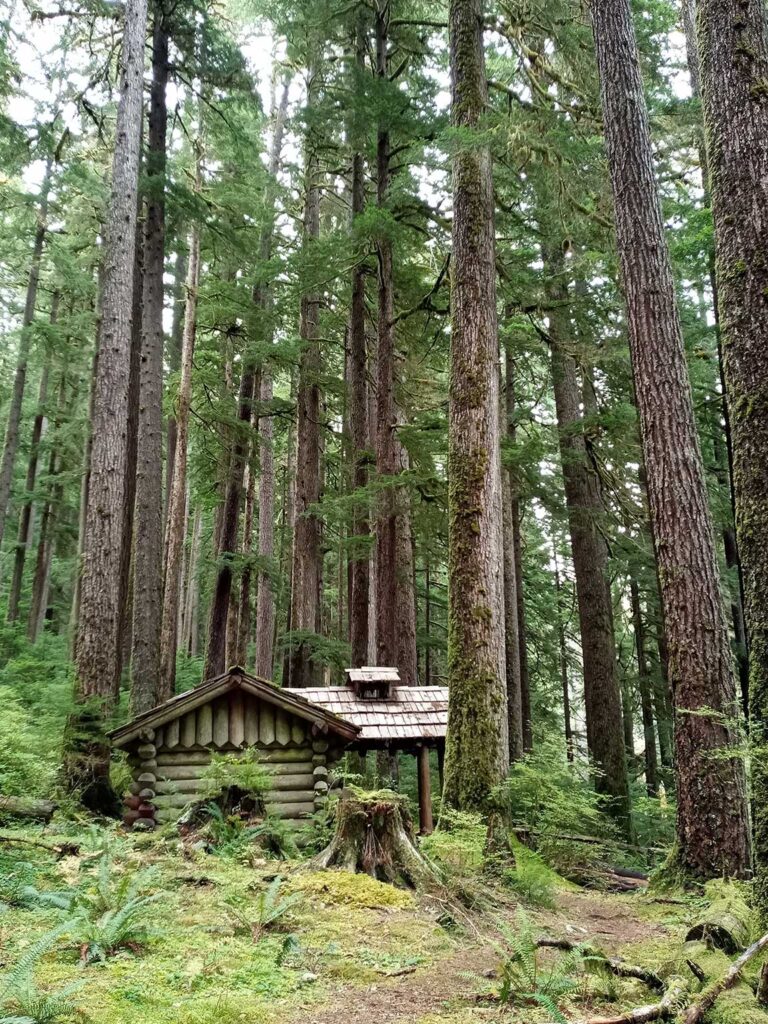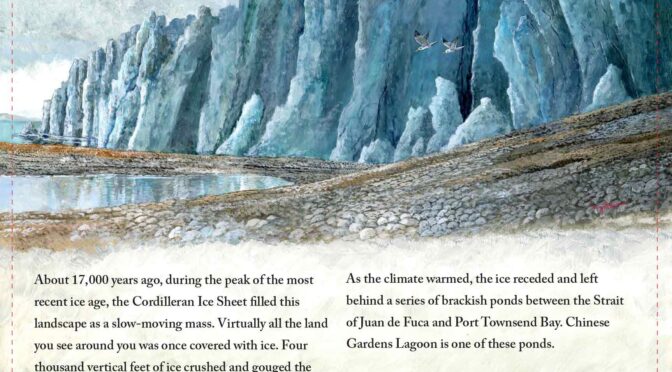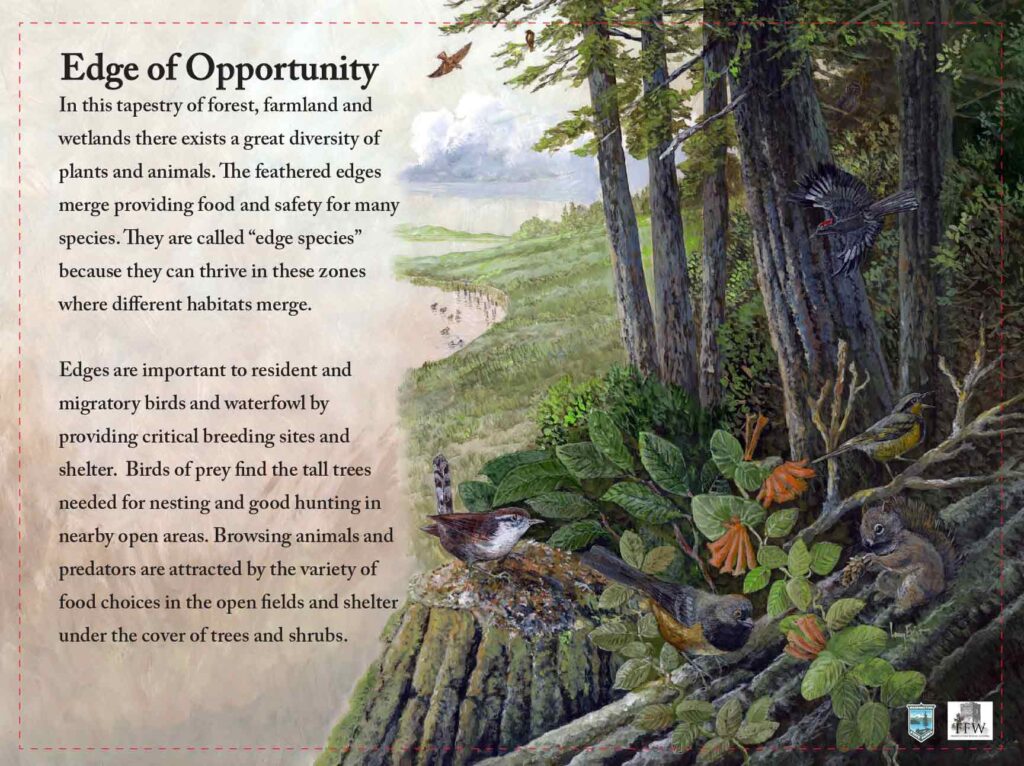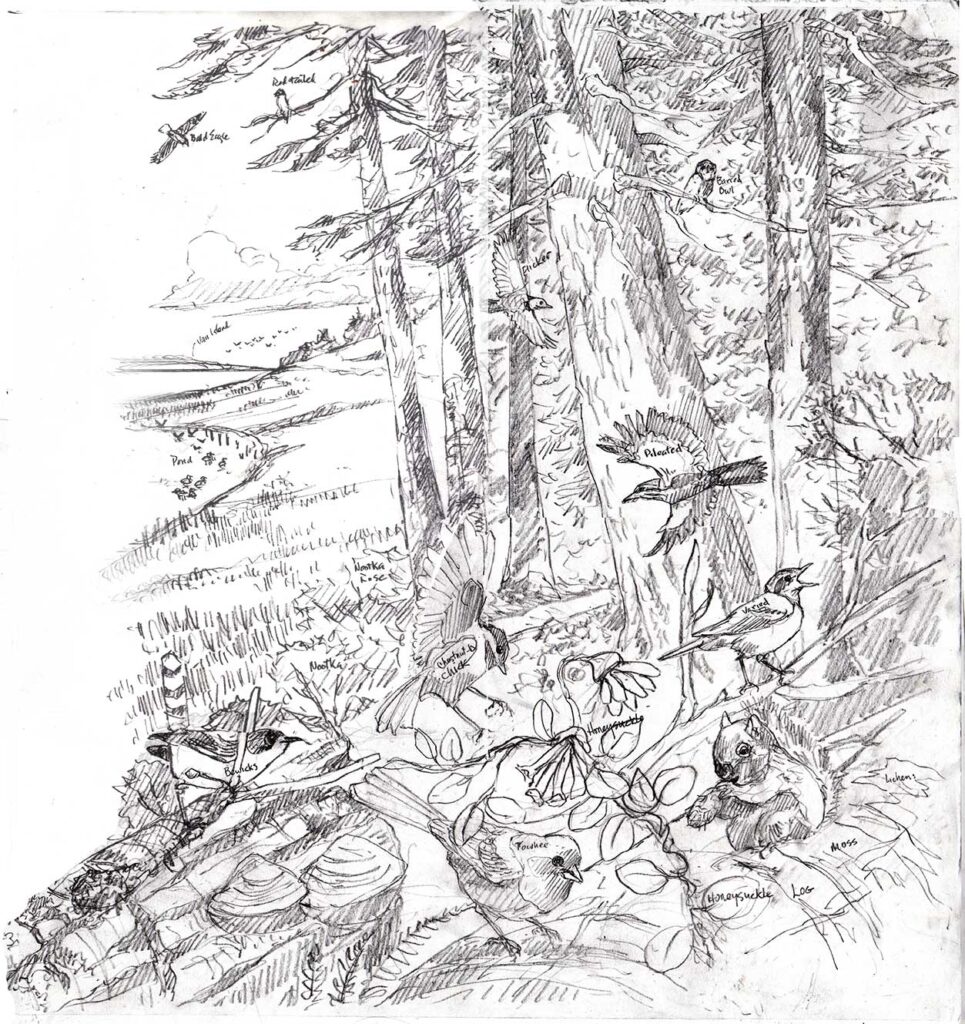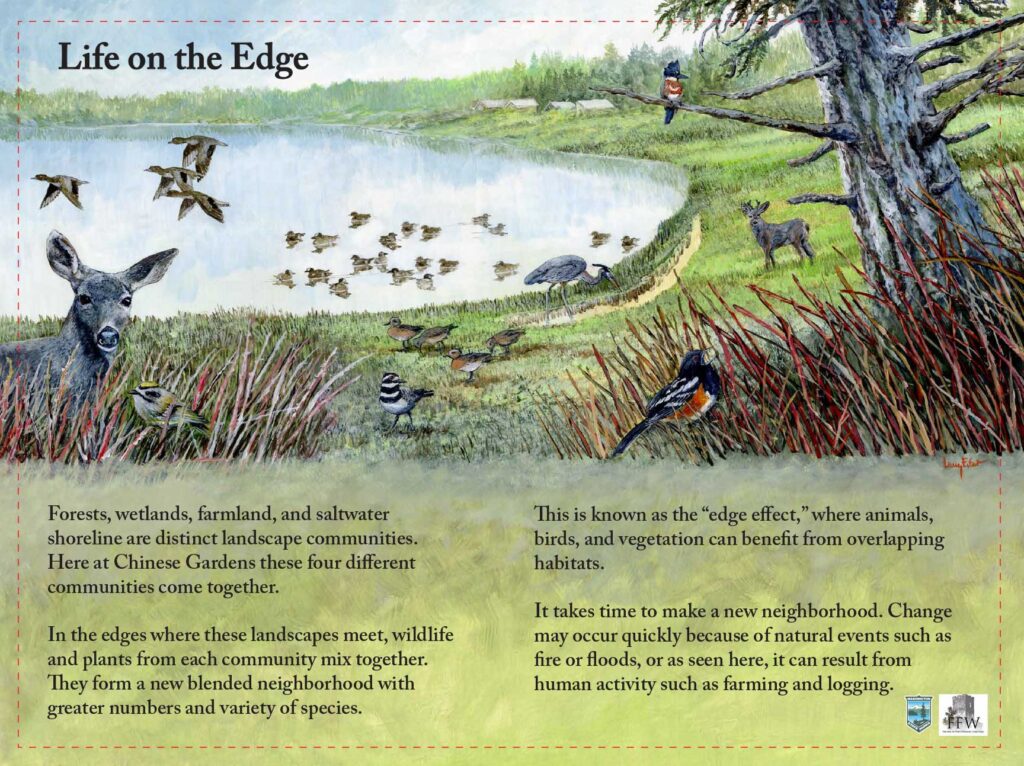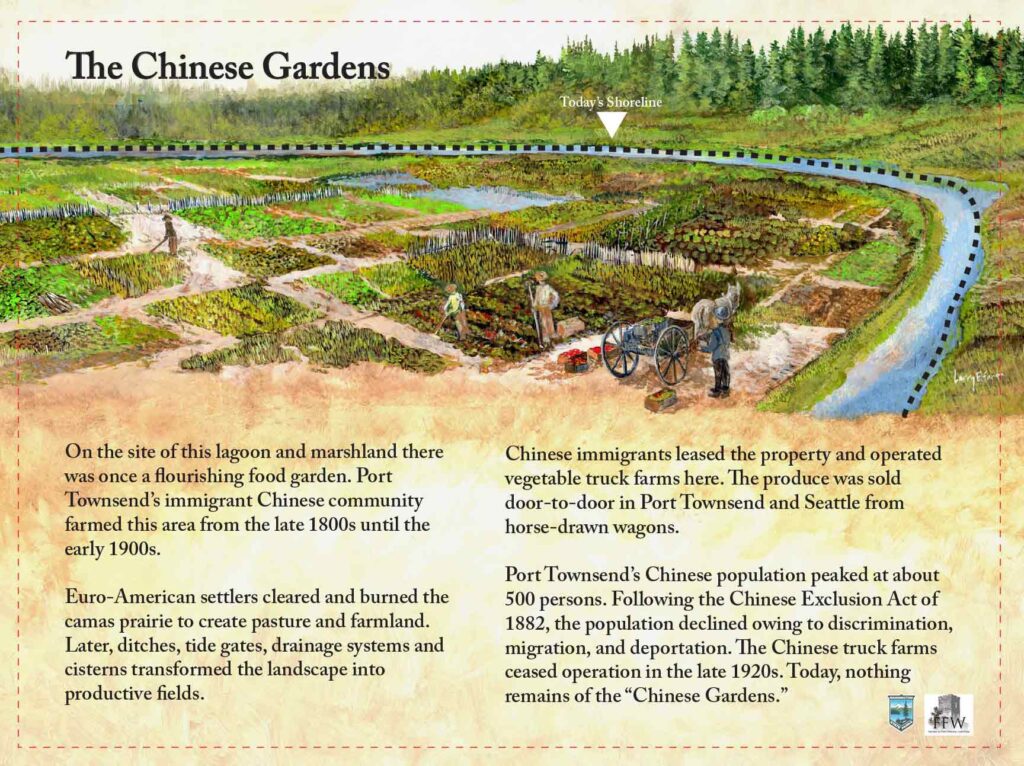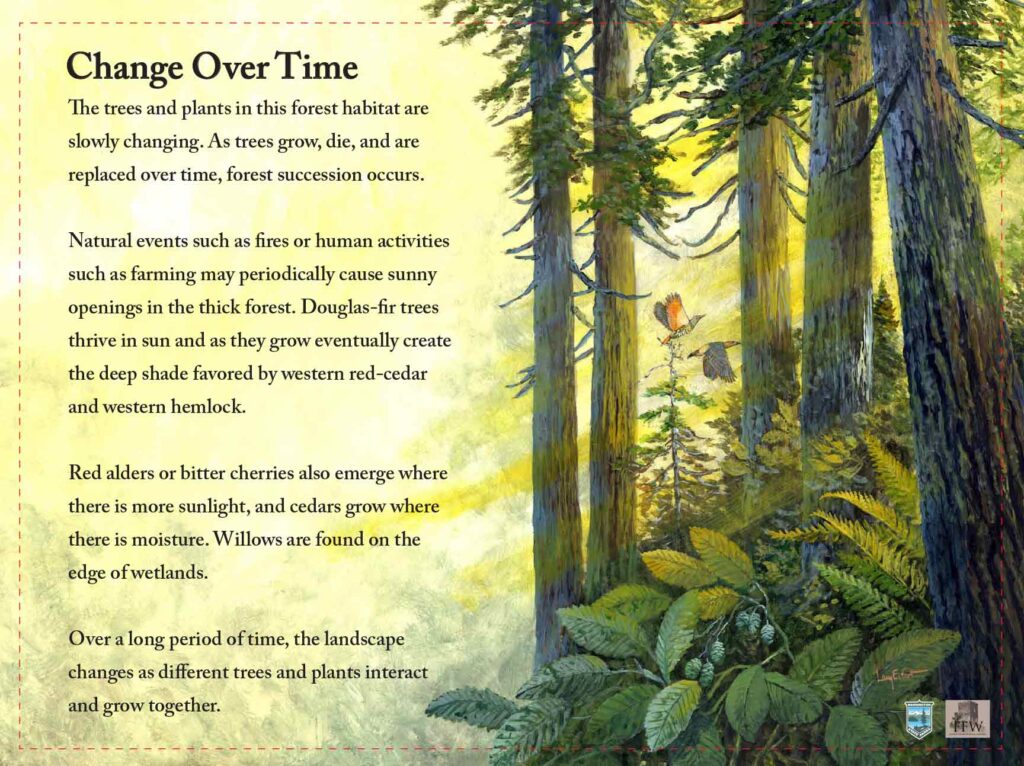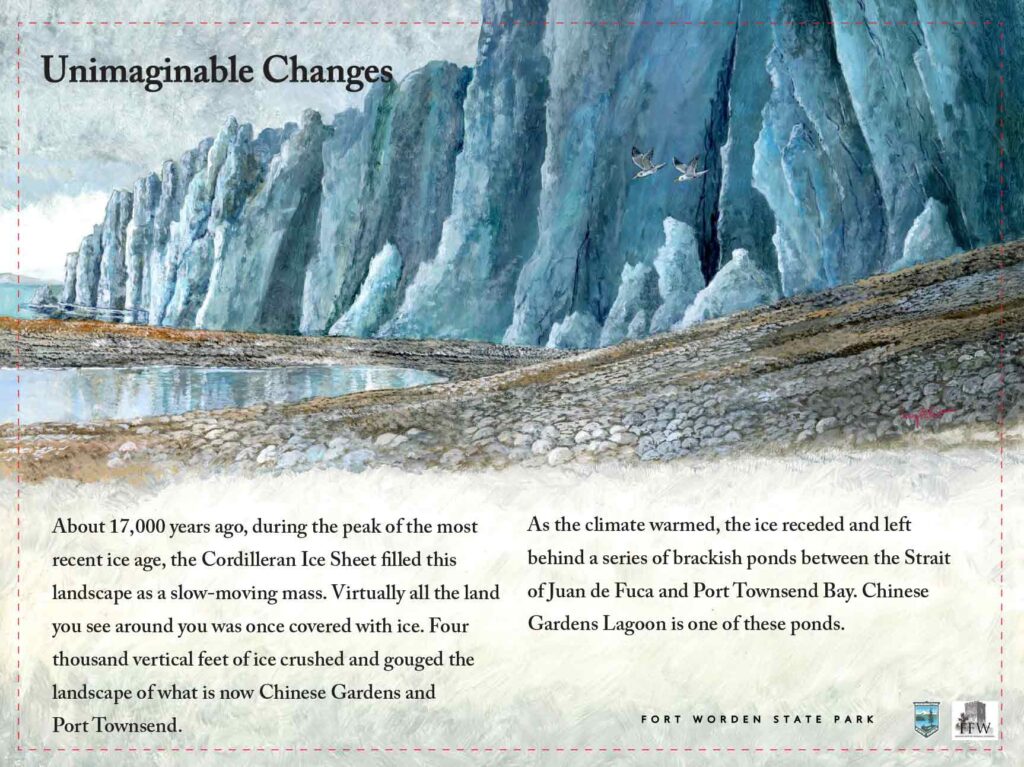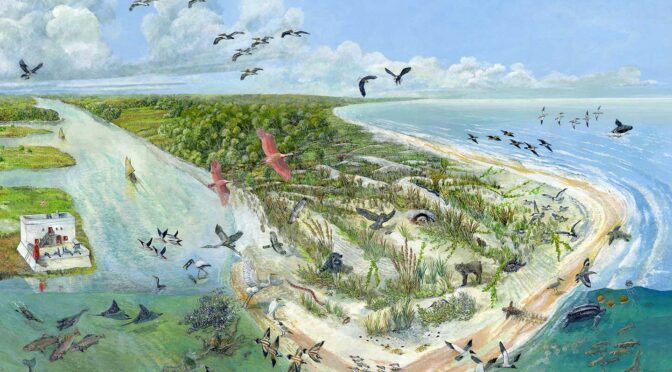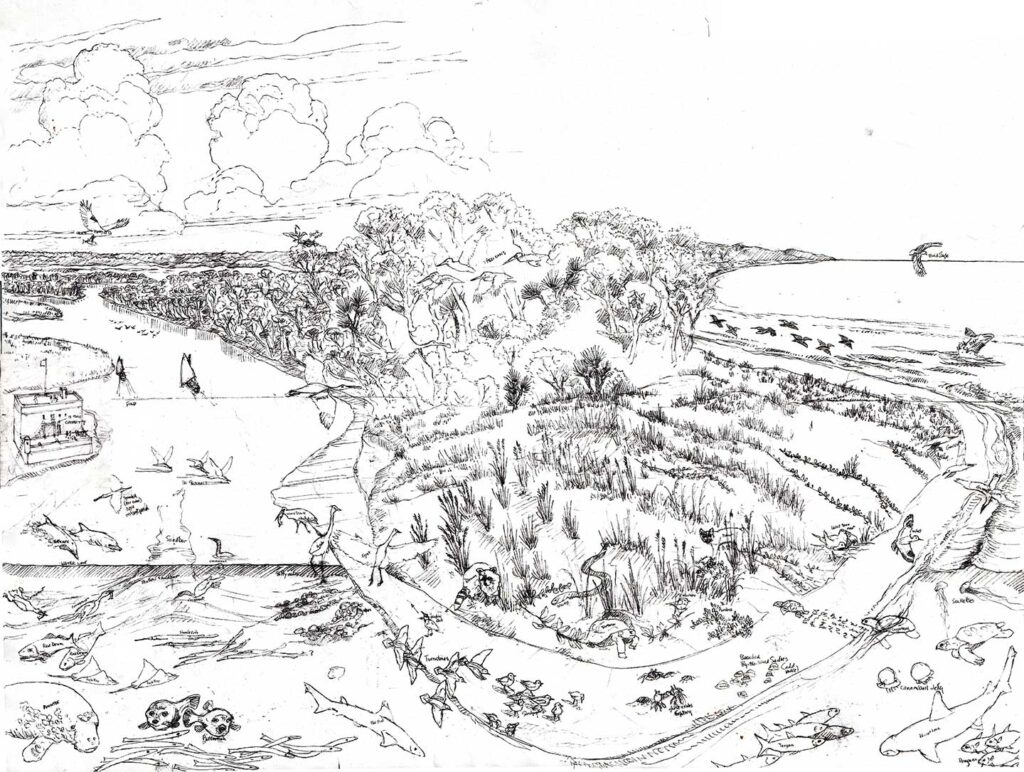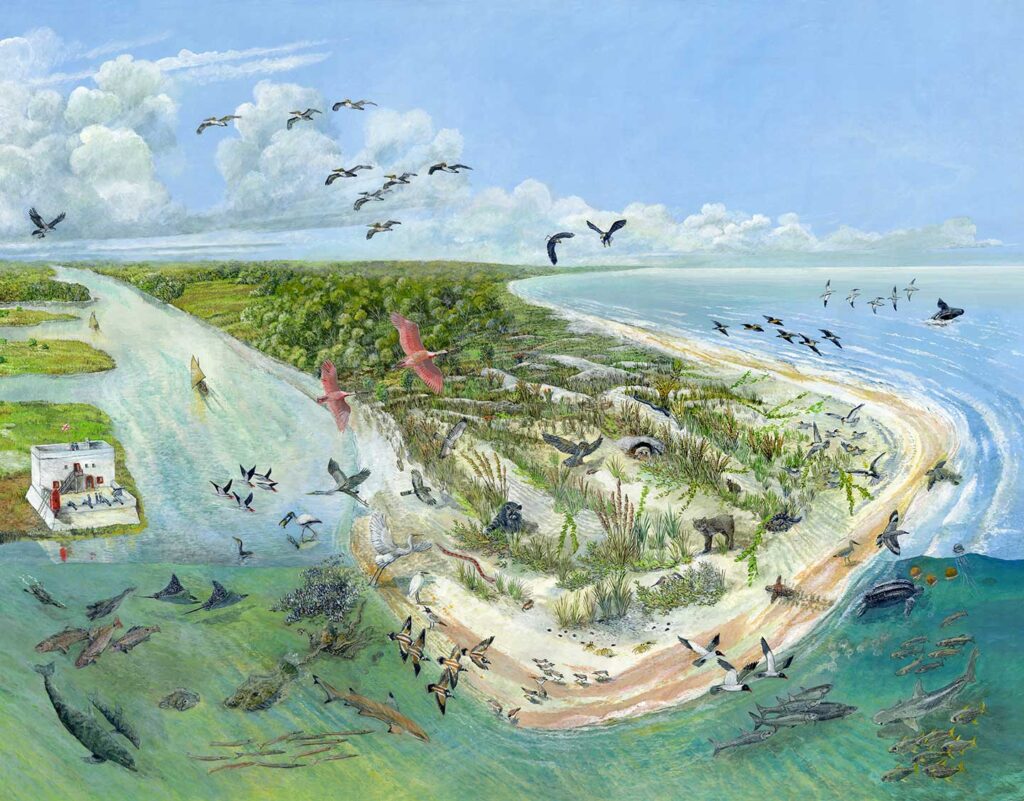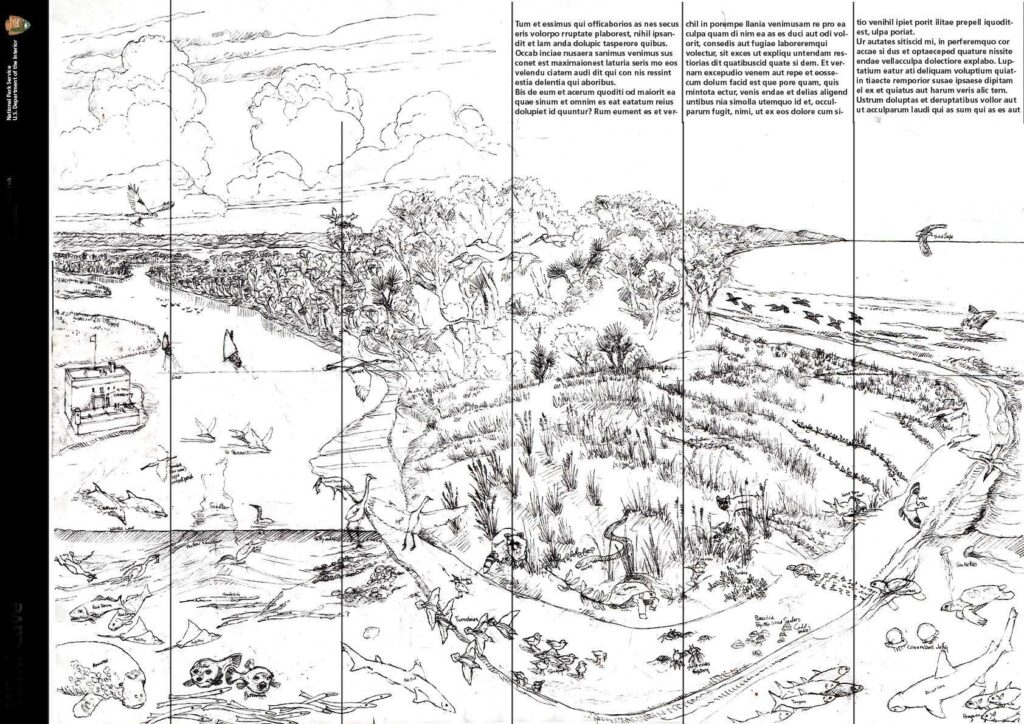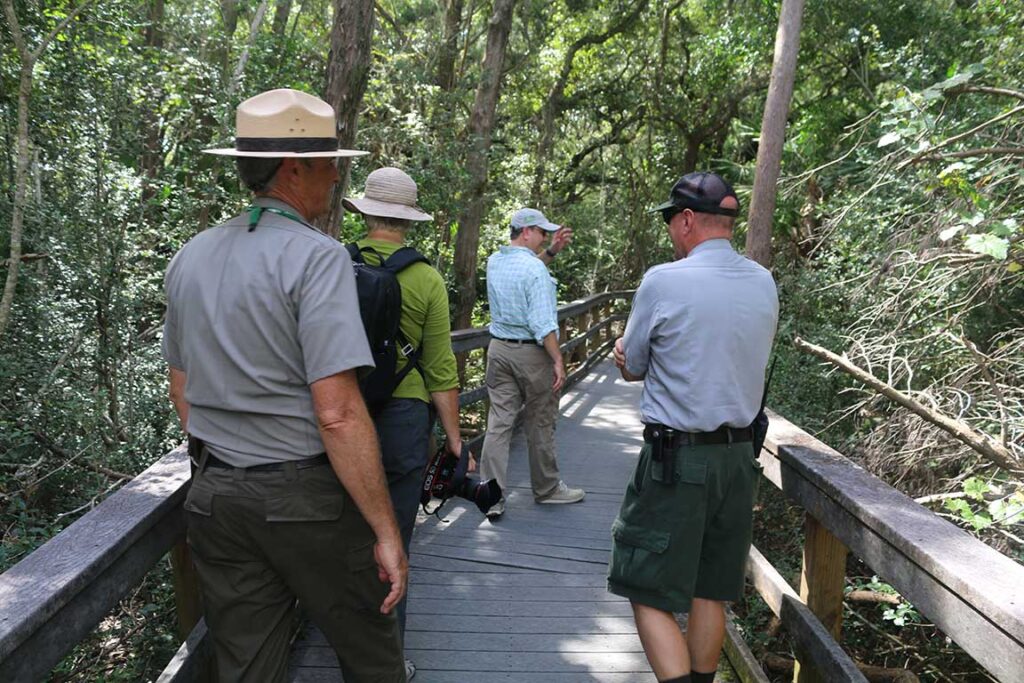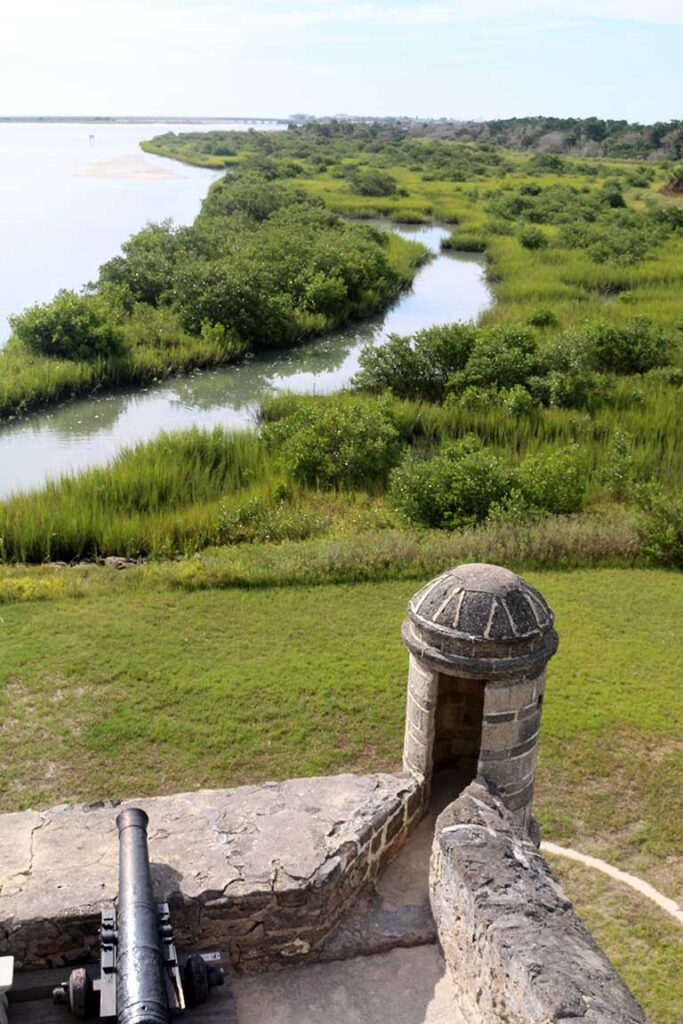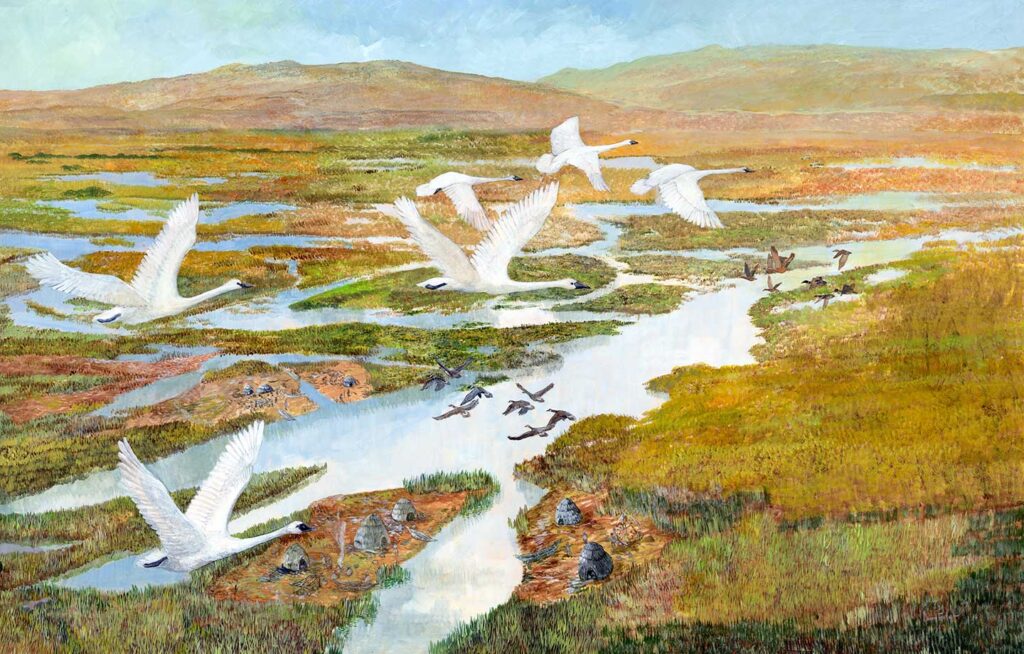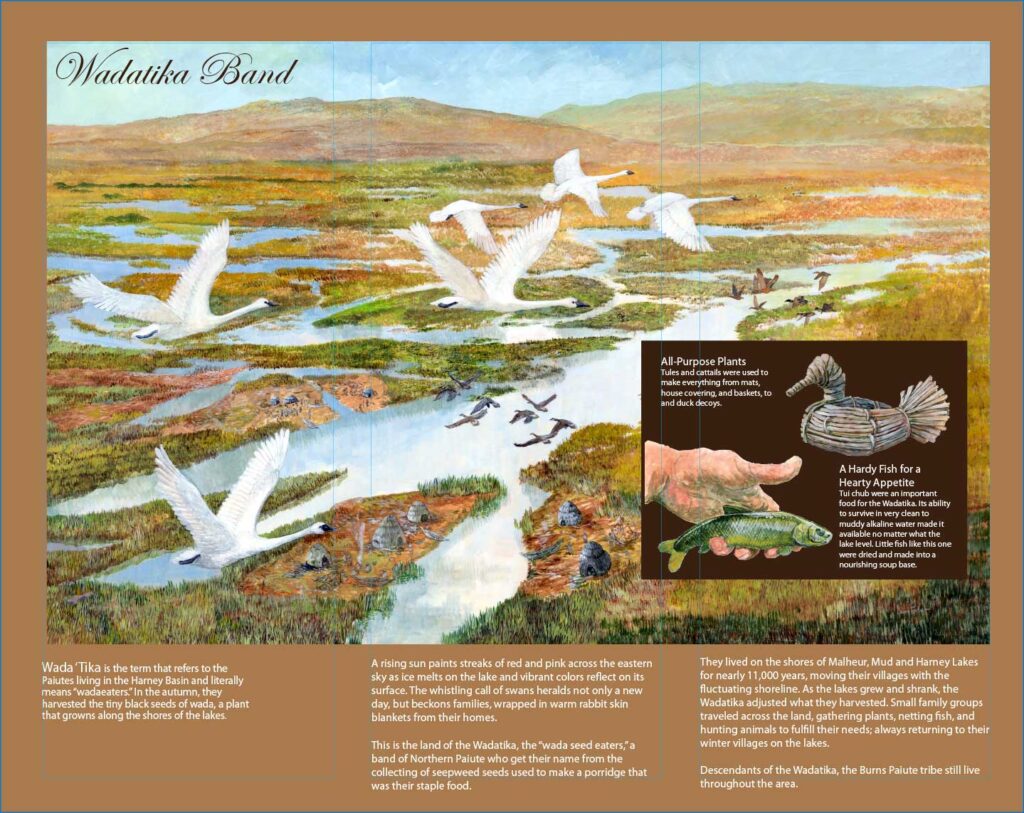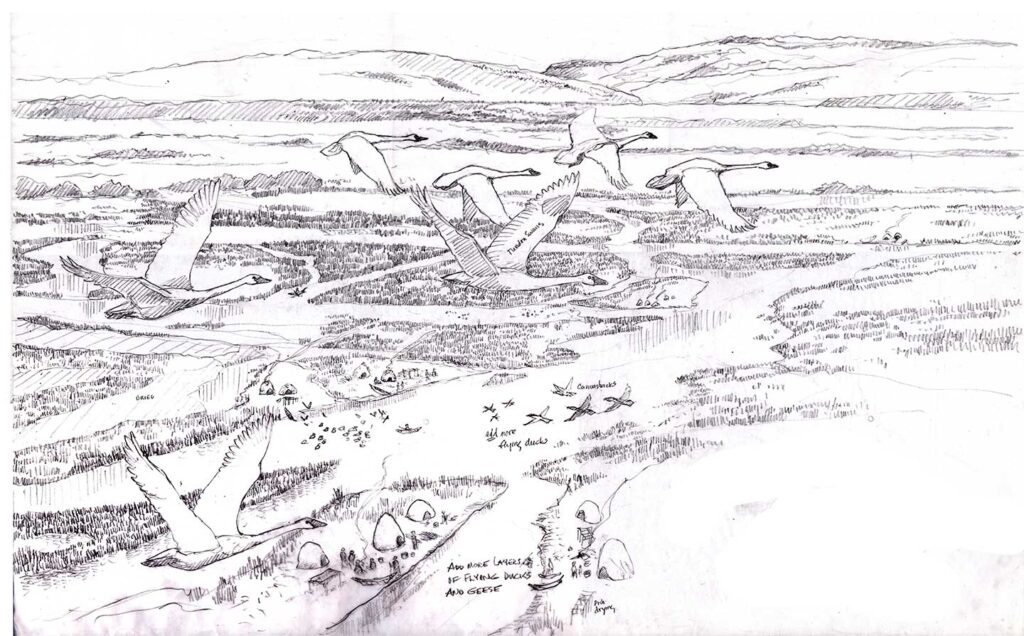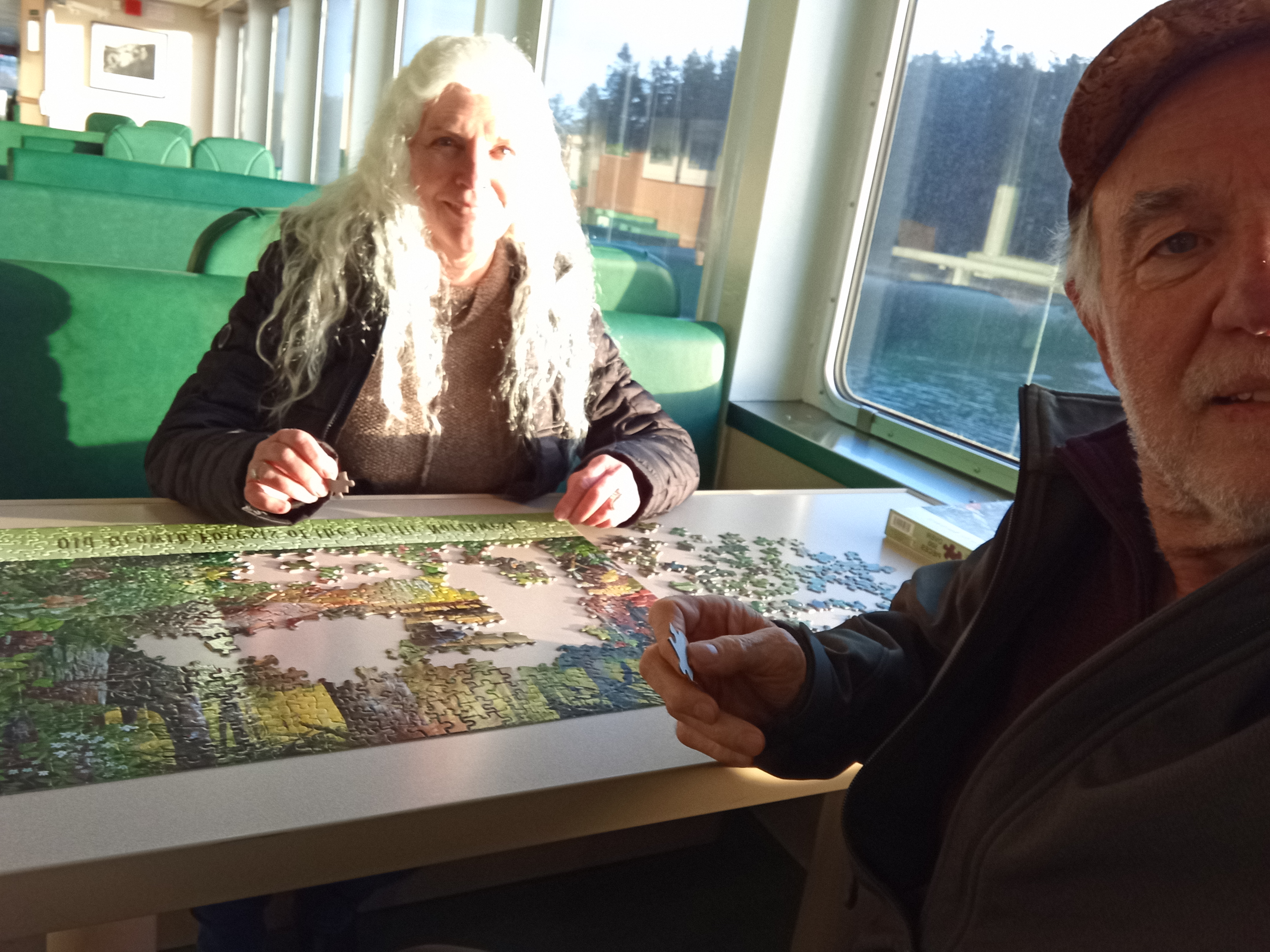
Yesterday we were coming home to Port Townsend on our little ferry. Parked on the car deck and walked up to confront one of my paintings in jigsaw puzzle form right on the table in front of us. Perfect, said Nancy and proceeded to put the thing together. I mostly watched a gloriously calm sunset after a big blow in the morning that shut the boat down, but still added a few pieces to the effort. This is a painting I did for Mount Rainier National Park years ago and is still installed there, the main attraction to the Ohanapecosh Visitor Center. It’s also still a puzzle – and who knows how many of these things are floating around the world. Thousands.
Now, I know it’s a bit of a stretch to say this is actually ‘public art’, but bear with me. I first figured out how to put my better National Park art on puzzles in the 1990’s, first with a company from Germany, then we did it ourselves through a great group called Impact Photographics. It takes a pile of doubt or at least a credit score. Various others have made puzzles, too, and I’m guessing we’ve published over 80 different images. Currently, Nautilus Puzzles from California is actually making them out of real laser-cut wood that cost as much as some of my early paintings did!
These days, we’re not as aggressive with this, but still supply them to parks and stores. We once found one in Hawaii at the Pahoa Farmer’s Market under a pile of used clothes and books.
I’m not here to advertise buying puzzles, but instead to just say that this sure has been a wide and complex life. I have painting projects going on right now about restoring Northwest salmon, a bison mural in South Dakota, a Florida project involving dolphins and octopus, nesting terns and sharks. I’m proud to say I’m sponsored by a great backpacking equipment company called Six Moon Designs that help get me out there in comfort, and by a truly wonderful partner. Nancy keeps it all running behind the scenes as well as on the road – or on the ferry.
I guess what this post is all about is for me to just say thanks to everyone for all of this. It takes an amazing number of consistently interested people to keep our little lifestyle going for all these decades. I wish I could give back, but with the next paintings in progress, maybe I am.
Thanks for reading this week.
Larry Eifert
Here’s my Facebook fan page. I post lots of other stuff there.
Click here to go to our main website – with jigsaw puzzles, prints, interpretive portfolios and lots of other stuff.
Nancy’s web portfolio of stunning photography and paintings
And here to go to Virginia Eifert’s website.

